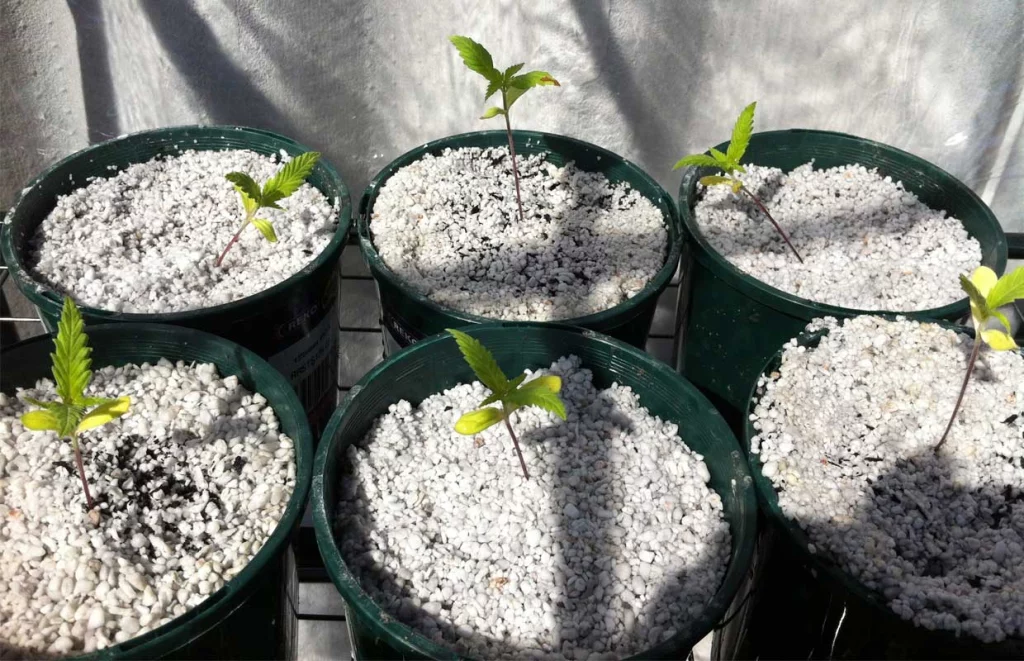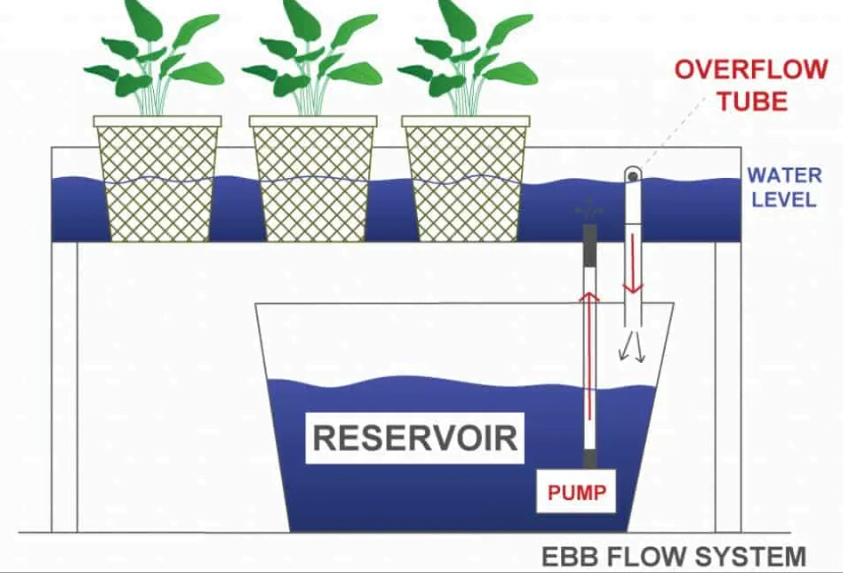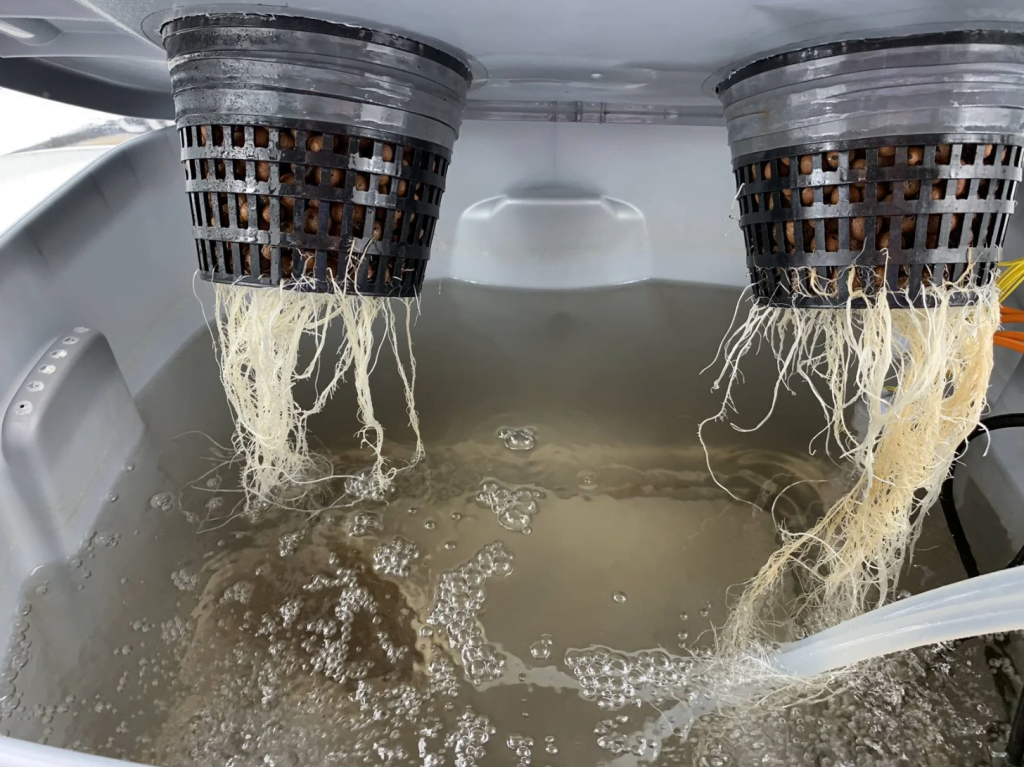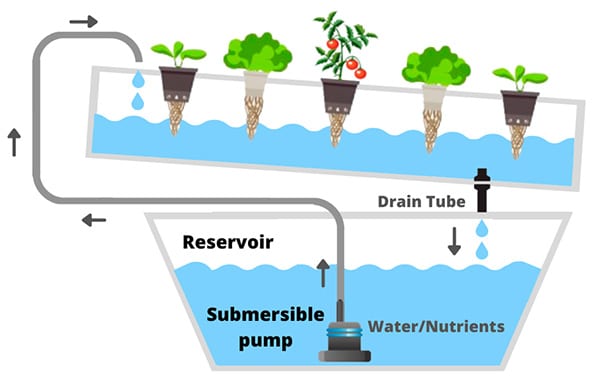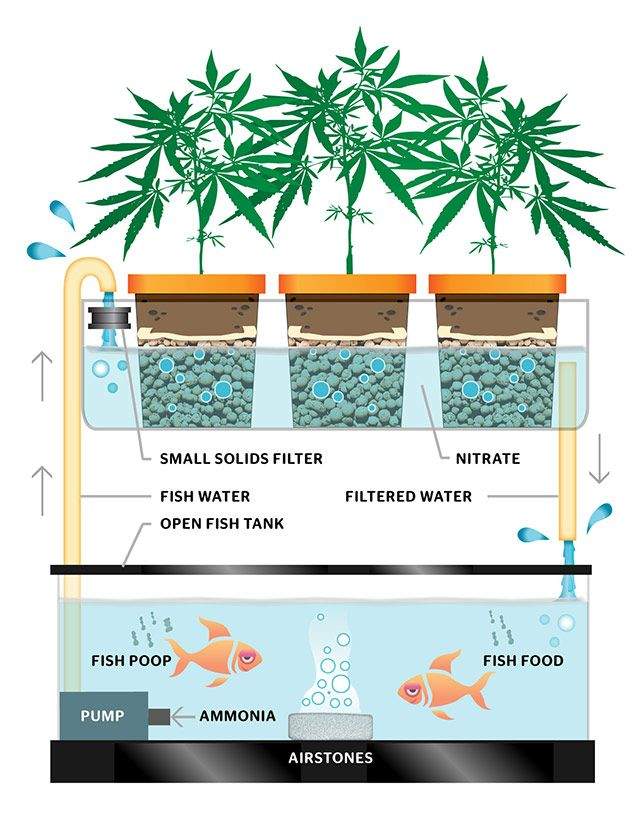English
Hydroponic methods provide variability for your growing
We have all heard about hydroponics and the great possibilities it offers. However, deciding which type of hydroponic method to use in your individual situation can be a dilemma. That is why I have taken it upon myself to inform and educate you, the information-hungry grower. I will cover the most common methods and explain the advantages and disadvantages of each. I hope these lessons will rub off on you and you will make the right decision for your individual needs and situation.
Your hydroponics can be as complicated or as simple as you want it to be – it’s up to you. You can fit pumps, aerators, valves and switches or fill a bucket with nutrient solution and simply pour it over your soilless growing medium. The flexibility of hydroponics is one of the main reasons why it is so effective and popular.
Peat and perlite (soilless mixture)
This simplest of all methods uses an ordinary planter filled with peat moss and enriched with perlite. This method is the ultimate no-brainer, requiring little or no maintenance throughout the life cycle of your plants – you simply feed them a nutrient solution once or twice a day and watch them unfurl their beautiful green foliage.
Perlite is needed to increase the moisture retention capacity of the growing medium. It’s cheap, available everywhere and wonderfully inert so it won’t interact with the nutrient solution and deprive all your pride of important nutrients.
A rockwool cube containing your rooted clone or seedling is lightly buried in the moistened peat and perlite. Make sure that the top of the cube is not covered, only the sides and the bottom. Peat is very porous, so the roots have a very airy environment to grow in, and this moist, oxygen-rich environment is exactly what they need to find a firm hold in the growing medium. Fast and vigorous rooting is the key to future leaf growth.
While this method is great, it has the disadvantage that the growing medium retains harmful salts from the nutrient solution. You can counteract this by replacing the nutrient solution with normal, pH-balanced water every four or five days. This will leach out a large part of the salts near the roots, but will not eliminate them – they will simply migrate to the bottom of the nutrient solution.
Another disadvantage of this method concerns pests – an infestation of critters is very difficult to eliminate with the peat-perlite growing medium. This is because the uneven surface of the substrate is full of tiny cracks and holes that are perfect hiding places for pests to breed in. If there is an infestation, you will even have to replace the top one to two centimetres of the substrate to get rid of the hidden pests that hide there from the insecticide. These moist hiding places also harbour insect eggs from which the next generation of pests can develop.
With this method, feeding the plants is as easy as watering any other houseplant. You can do it when you get home from work, or before you go to bed. It’s entirely up to you – just make sure that the growing medium is kept moist, but not extremely wet.
Ebb & Flood
The ebb and flow method uses a growing medium of pea gravel, sand or similar. There is a lot of flexibility here. The idea is that the roots can grow unhindered through the medium. I’ve heard of people using everything from their childhood marble collection to aquarium gravel. Even rocks dug out of the driveway work (if you clean them well enough).
This method can be as complex or as simple as you want it to be. The simplest version consists of a growing tray filled with your chosen medium with a hose connected to the bottom. The other end of the hose is connected to the bottom of a bucket that serves as a reservoir for the nutrient solution. Fill the reservoir with the nutrient solution and then lift it over the top of the growing medium. The nutrient solution flows out of the reservoir into the tray and floods the growing medium. Place the reservoir on the bottom and the nutrient solution flows from the tray back into the reservoir. Simple.
The great advantage of this method is that the roots are constantly moist and supplied with plenty of oxygen. The firm, heavy growing medium – I recommend pea gravel – holds the roots better than peat and perlite. There is also plenty of space between the grains of the growing medium so that the roots can grow almost unhindered. They waste less energy trying to plough through the medium and form an extensive root system early on. This leads to spectacular results later on.
One disadvantage of this method is that the tray needs to be flooded three to four times a day, on a regular basis. If you are working, your plants will suffer because you cannot feed them sufficiently. This is a good reason to consider automating the ebb and flow method. Use a pump to fill the tray, a float switch to indicate when the tray is full and an electric valve that opens to allow the nutrient solution to flow back into the container. An electric timer is also a must for this system.
Aerated solution (bubbler)
If you would like to use the ebb and flow method with all its advantages, but are not at home during the day and are not well acquainted with electrical equipment, here is the solution for you: use the same growing tray and medium as for the ebb and flow method, but do not use a reservoir. In this system, the reservoir is replaced by an aquarium aerator. The tubes of the aerator are run along the bottom of the grow tray and the tray is then filled with the growing medium.
The idea is that the grow tray is constantly filled with the nutrient solution (and nutrient medium). The aerator blows air through the perforated tubes at the bottom so that the nutrient solution does not stagnate. This process is called aeration and keeps the goldfish alive in your aquarium. The rising air bubbles circulate and provide a constant flow of nutrient solution to the roots of your plants.
With such a system, you only need to check for pests once in a while and change the nutrient solution once or twice a week. It is the best solution for the working grower, giving absolutely amazing results with minimal complications. I have been using this system since I figured it out nine years ago and I have absolutely no complaints. The pleasant hum of the aerator makes me fall asleep at night.
NFT – Nutrient Film Technique
Nutrient film technology (NFT) is widely used on commercial farms because it is fully scalable and gives amazing results. If you want, you can expand your NFT system to cover several hectares of cultivated land.
Basically, the nutrient solution flows continuously through a flat-bottomed tray or a wide, round pipe (PVC sanitary pipes are great for this). The solution can flow over the roots of the plant, delivering the nutrients very efficiently. As the plant roots are in fast flowing water, they are also supplied with a large amount of oxygen. Most NFT growers aerate the nutrient solution in the reservoir to further increase the oxygen content.
No nutrient medium is used, so the roots expand at a phenomenal rate, resulting in amazing growth. Some common (legal) crops grown commercially using this technique are tomatoes, cucumbers, peppers, courgettes and even pumpkins.
While the advantage of this system is its phenomenal growth and infinite scalability, the biggest disadvantage is its complexity. This technique requires a high-powered pump, an aerator and a complicated network of pipes or trays. The results are spectacular, but many feel that the complexity and labour involved are not worth it.
Another disadvantage of this method is the cost of setting up the whole system. The cost of a pump, aerator and various pipes adds up quickly. Moreover, it does not forgive mistakes or omissions that cause headaches later on.
Aquaponics
Aquaponics sounds like a piece of cake, but it is actually the most elaborate way to grow hydroponically. It is a natural hydroponic method that uses virtually no processed chemicals.
Basically, a plant is grown in a hydroponic solution (a growing medium is optional).
The nutrients for the solution are obtained naturally, for example from the waste water of a fish tank (an extremely rich source of the ingredients used in normal, non-natural hydroponics). The system has the advantage of being almost self-sustaining, but it is extremely costly and labour-intensive to set up and maintain.
Aeroponics
This method is a spin-off of NFT, and the setup is almost the same. What changes, though, is the method of delivering the nutrients. Instead of having it flow over the roots, the solution is blown on the roots in a fine mist via a special nozzle, much like the fuel injector on your car. This method is still quasi-experimental, and it isn’t used very often. A major consideration is cost. Another factor is that no way (so far) has been found to keep the nozzles from getting clogged due to nutrient crystallization.
So what is the best hydroponic methods for growing cannabis
While cost should always be kept in mind, your level of growing skills should also be taken into account. Beginning growers should use the peat and perlite method. This will allow you to learn and improve your growing skills using a very simple and gentle hydroponic method. The results may not be as spectacular as you would see using some other methods, but it is still a very effective way to grow. You will not be disappointed.
Another consideration is location. Are you growing them in a closet or in the basement? Or do you have a dedicated room for growing? Perhaps a shed or garage? Experienced growers who only use a closet or corner of the basement should use ebb-and-flood or aeroponics methods – NFT and aeroponics need space and are high maintenance.
Be realistic about your requirements, with space being the first thing to consider and therefore the deciding factor. If you want to squeeze your system into a space that’s barely big enough for it, think about fixing a leaky pipe that only has a few inches between it and the wall. That’s not good.
Now for the cost. The cheapest system is the peat and perlite method, although I recommend the aerated solution method or the tidal method if you can afford it. The slight increase in cost is far outweighed by the results and the absence of headaches.
Have you decided to use one of the hydroponic methods? If so, be sure to choose quality cannabis seeds.
Published by Sakul
22/01/2023choose and buy cannabis seeds from our offer
our pleasure

